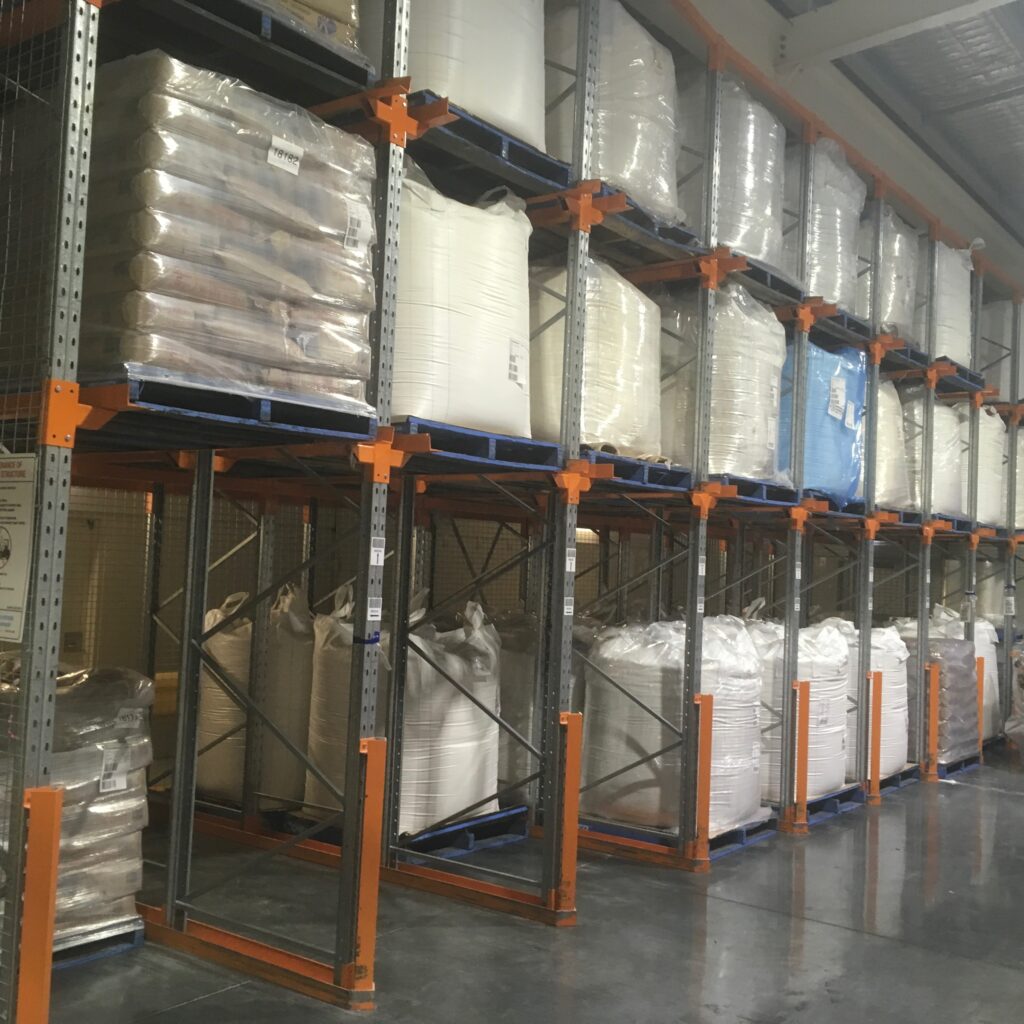If your business is storing goods in a warehouse, it’s important to ensure that warehouse is being used as effectively as possible. After all, you don’t want to be paying for space you’re not using. Because of this, it’s important to consider how big a warehouse is needed for a business and also determine when a business has outgrown a warehouse, or whether more space can be created within the business’ existing warehouse. This doesn’t mean expanding the physical size of the warehouse (although that can often be a possibility). This means optimising an existing warehouse and maximising the total possible storage space.

Sometimes it can be difficult to determine whether or not a warehouse can have more storage space, but working with experts like us here at Colby Dandenong can often help. Take a look at our suggestions for maximising warehouse space and, if you think any of them apply to your warehouse, we’re happy to help.
Why Warehouses Tend To Fill Up
Although a warehouse configuration may start its life being perfectly optimised or not overly full, this can change over time due to changes in the businesses. This can creep up on a business over time and not be noticeable until it’s too late. One way to prevent warehouse crowding, giving a business a change to fix the problem early, is to be aware of how this happens in the first place.
A business growing over time will, over course, make a warehouse busier. If your business started only shipping a small amount of goods to start but is now shipping a large amount of goods, obviously that warehouse is going to be busier. What worked for quieter times likely doesn’t work for busier times.
With that, the warehouse’s original layout or choice of pallet racking may not have been optimal. It just wasn’t noticeable until the business got busier.
Another thing that happens to businesses over time is that the general throughput of goods may change. The most popular products may change from low cost, high volume products to high cost, low volume products. This will completely change how a warehouse operates and what kind of storage it needs.
Make Sure You Have The Right Pallet Racking
We’ve already implied it, but if a warehouse is having storage problems or if you just want to increase the storage space in a warehouse, evaluating the pallet racking and ensuring the warehouse has the right kind of pallet racking may increase the storage capacity drastically.
Selective pallet racking may be cost effective and easy to install, but it has limitations in terms of storage density. For different storage situations, especially situations where there are multiple pallets of the same SKU, a denser storage solution may be in order. For example, even something only a little bit denser than selective pallet racking, like double deep pallet racking, can add a lot more storage space to a warehouse by reducing the total amount of aisles in the warehouse itself.
Look For Other Ways To Reduce Aisles And Aisle Widths
Aisles are obviously needed in warehouses so that pallets can be retrieved, but it’s also space where pallets can’t be stored. Because of this, reducing the total amount of aisles or the overall aisle width in a warehouse can help increase its storage space.
Higher density storage is one answer to this, as is looking at specialised materials handling equipment for racking styles like narrow aisle pallet racking. All of this reduces the total amount of space given to aisles and gives it back to pallet storage.
Look At Other Unused Space
Unfortunately it’s usually unlikely that every part of a warehouse will be completely useful, but there are still often bits and pieces of unused space that’s forgotten about. This is why it can sometimes be beneficial to get an expert in to evaluate the warehouse space and recognise these unused spaces. Sometimes all it takes is shifting the existing pallet racking or other areas of the warehouse to better utilise space that can be used for more storage.
Can Something Else Be Moved?
With that, have you considered moving where MHE is stored? Or where packing is done? Are either of these areas taking up more space than is needed? These are all things to consider if you want to maximise the space of a warehouse. Rather than just trying to fit more into the space you think you have, re-arrange there spaces to give yourself more.
Another part of this tip is to look at the storage of miscellaneous warehouse items. These are things like tools, safety equipment, staff personal items, and more. If these are in different parts of the warehouse, there may be redundant space. It’s always worthwhile to see how some of these items are stored. For example, do these miscellaneous items have adequate shelving?
Or Just Go Upwards
Another solution is to look upwards.
One way to use the vertical space in a warehouse is through a mezzanine. This can move certain warehouse functions like packing, general storage, or shelving above the general warehouse floor, making more space for storage and other activities. What’s more, a mezzanine can have pallet racking underneath or be used for another type of store, effectively doubling the usefulness of that part of the warehouse floor.
Another way to go upwards is to simply extend the height of the pallet racking. This may not be possible with existing pallet racking, but it may end up being more cost effective to upgrade your pallet racking than it is to move to a new warehouse.
Find Out How You Can Maximise The Space Of Your Warehouse
There’s obviously a lot that can be done to help businesses get more out of their existing warehouse space, and this is just part of it. If you need advice or help, feel free to get in touch with us.




